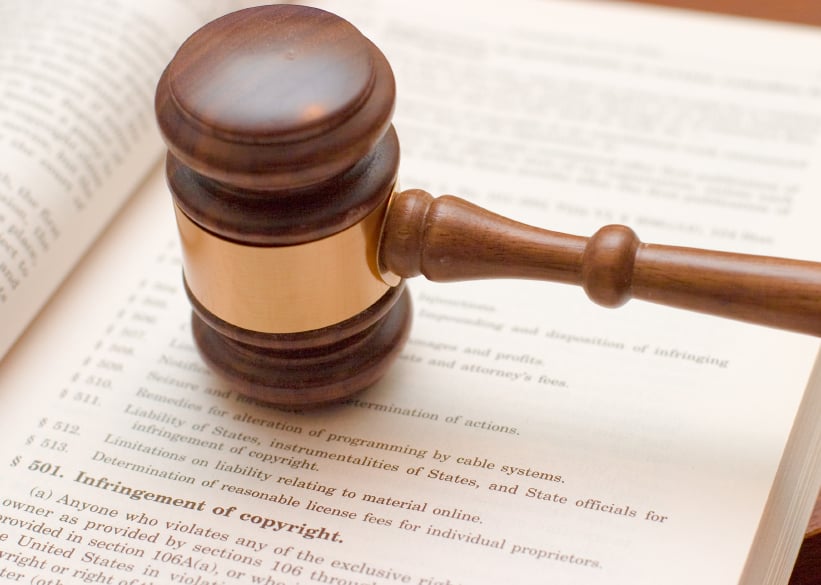Previously, we looked at the divisions growing in the open access community and an overview as to what Creative Commons is and how it applies to academic research. However, all of this points to a much larger question: Why is copyright in research such an important issue for research?To understand this, we first have to look at what copyright is and then how it applies to research and why that application is crucial.
What is Copyright

Copyright, according to the U.S. Copyright Office, is a set of exclusive rights that are granted to a creator of a work of an original work authorship. Those rights include the right to make copies, publicly display a work, perform a work and create derivative works based upon it.
A creative work of authorship is basically any work that has a requisite level of creativity, which is almost any amount, and is fixed into a tangible medium of expression, such as being written on a sheet of paper, saved to a hard drive or otherwise made permanent. Copyright includes a variety of works including written works, paintings, photographs, music recordings, movies and much more.
However, many things can not be copyrighted including names, facts and ideas. While those, in some cases, can be protected by other types of intellectual property, including trademark and patent, they can not be protected under copyright.
What this means for researchers is that the ideas and the facts that are learned while conducting research or writing a paper are not copyrightable. However, the papers themselves (the expression of that information) can be. As such, every research paper, or draft thereof, is copyright protected the moment it is saved to a hard drive.
That copyright, in turn, limits how others can use that paper. Without permission from the copyright holder, usually the author, no one else can legally post it on a web site, share it in a journal or even use lengthy passages of it for their own research. While fair use, an exemption to the exclusive rights of the copyright holder, may protect short quotes, copyright still limits the use of longer passages and the creation of derivative works.
However, copyright is like any other property. You can license others to use a copyrighted work and even sell it or give it away. This is why, when publishing a work, it’s important to understand what you are granting the journal. Is it a copyright transfer or a license? If it it’s the latter, what are the terms of that license?
That agreement and how the journal chooses to use the rights it obtains plays a key role in determining in how an article is distributed and what others can do with it. That, in turn, has a significant impact on how scientific knowledge is spread.
Copyright and Research
While copyright can’t restrict the facts and information learned during research, it can be used to restrict access to the research itself.
The most common approach that has been taken is simply restricting who can view the paper. Many non-open access journals would make articles available only to subscribers and since copyright prohibited copying and public display of the papers, it isn’t legally possible for someone else to come along and make copies for other sites or journals.
However, there are other ways copyright can restrict access to research. Since it’s an infringement to create derivative works based upon a copyrighted work without permission, long quotes or repeating a significant portion of a paper, even with attribution, could be infringing. This can add extra challenges to doing meta analyses and replicating results.
Creative Commons and other open licenses work around these issues by granting the public, including other researchers, permission to copy and build upon the work. This ensures that the research is always publicly available since it can be freely copied and shared and that anyone wishing to build upon the research will have no concerns about copyright when working.
However, open access and open copyright approaches to publishing are not without criticisms. Since opening up the copyright on a paper means that there is no business model in selling access to it, publishers often recoup the cost of publication by charging (or charging extra) those who publish in their open access journals. This has led to allegations of “pay to publish” research and the rise of predatory journals that collect publication fees but offer no other benefit.
But while neither approach is perfect, both approaches are built upon copyright, either using it to restrict access or having researchers pay to remove most copyright restrictions.
Bottom Line
In the end, scientific publishing is a business and no matter the model a publisher chooses, that business is based on copyright.
However, that choice made by the publisher and the researcher is going to have a profound impact on who has access to the research and what they can clearly do with it. So while the decisions about copyright may have been made for reasons independent of the research itself, it is a major factor in determining what will happen to the research after it is published.
Copyright is not an issue that is going to go away for researchers. As open access continues to build momentum and debates about copyright become more intense, the importance of the law is only going to grow.
As such, it’s crucial that researchers be aware of copyright. Not only so they don’t run afoul of it when publishing their work, but also so they can understand the laws that govern the business responsible for distributing their writing.
The opinions expressed here are my own and do not represent the views of iThenticate.
Related
Topics: Legal